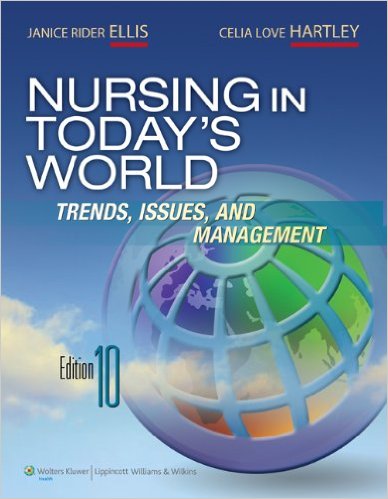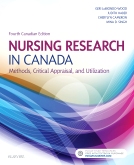Test Bank For Nursing in Today’s World 10th Edition by Dr. Janice Rider Ellis
Original price was: $75.00.$40.00Current price is: $40.00.
Test banks are a essential resource for teachers, instructors and professors who use textbooks in their courses. The Test Bank for Nursing Care of Children Principles and Practice 3rd edition by Susan R. James is a comprehensive collection of questions and answers that cover all the topics in the textbook.
The Test Bank for Nursing in Today’s World 10th Edition by Dr. Janice Rider Ellis is another excellent resource that includes questions and answers on all the topics in the textbook. Test banks are an essential tool for teachers, instructors and professors who use textbooks in their courses.
Digital item No Waiting Time Instant Download
ISBN-10 : 1605477079
ISBN-13 : 978-1605477077
Description
Test Bank For Nursing in Today’s World 10th Edition by Dr. Janice Rider Ellis
Import Settings:
Base Settings: Brownstone Default Information Field: Client Needs Information Field: Cognitive Level Information Field: Difficulty
Information Field: Integrated Process Information Field: Objective
Information Field: Page and Header Highest Answer Letter: D
Multiple Keywords in Same Paragraph: No
Chapter: Chapter 1: Exploring the Growth of Nursing as a Profession
Multiple Choice
1. Which of the following statements most accurately describes the practice of medicine in Greece from 800 BC to 300 BC?
A) Greek culture stressed natural causes for disease, a patient-centered approach, and the necessity of accurate observations and record keeping.
B) Greek culture borrowed medical practices from the countries it conquered, and physicians were often slaves.
C) Major and minor surgery, children’s diseases, and diseases of the nervous and urinary systems were described in Greek culture.
D) Medicine men (known first as shamans and later as priests) were responsible for curing ills of body and mind.
Ans: A
Client Needs: B
Cognitive Level: Comprehension Difficulty: Moderate
Integrated Process: Nursing Process Objective: 1
Page and Header: 4, Table 1.1
Feedback: Hippocrates, born about 400 BC, was a Greek citizen who became known as the Father of Modern Medicine. He emphasized natural causes for disease, a patient-centered approach, and the necessity of accurate observations and record keeping. These priorities influenced the practice of medicine both in Greece and beyond. Persia was known to utilize slaves as physicians, and Rome borrowed medical practices from the countries it conquered. Ancient India emphasized hygiene and prevention of sickness and described major and minor surgery, children’s diseases, and diseases of the nervous and urinary systems. Medicine men were characteristic of the Mayan and Aztec civilizations.
2. Florence Nightingale fostered the development of nursing as a profession. What was the basis of her nursing theory?
A) The nurse’s role is to assist individuals (sick or well) to carry out those activities that they would perform unaided if they had the necessary strength, will, or knowledge.
B) The goal of nursing is to put the patient in the best condition for nature to act upon him, primarily by altering the environment.
C) The focus of nursing is the spiritual subjective aspects of both the nurse and the patient and the “caring moment” relating to the time when the nurse and the patient first come together.
D) The focus of nursing is the care of human beings who are viewed as open systems in constant interaction with their environments.
Ans: B
Client Needs: A-1
Cognitive Level: Analysis
Difficulty: Difficult
Integrated Process: Nursing Process
Objective: 2
Page and Header: 21, Early Definitions of Nursing
Feedback: Florence Nightingale, in her Notes on Nursing: What It Is and What It Is Not, described the nurse’s role as one that would “put the patient in the best condition for nature to act upon him” (Nightingale, 1954, p. 133), a definition that often is quoted today. This action was prioritized over physically assisting the patient. Watson emphasized the spiritual subjective aspects of the nurse and the patient, and the “open systems” concept is central to King’s theory of nursing.
3. Which one of the following statements accurately describes an element of the process of providing a definition of nursing?
A) Researchers can pinpoint the period in history when nursing first evolved.
B) Nurses agree on a single definition of nursing, partly because of the history of nursing. C) There is an obvious distinction between nursing and medicine.
D) Nursing theorists developed definitions of nursing consistent with their conceptual frameworks.
Ans: D
Client Needs: A-1
Cognitive Level: Analysis
Difficulty: Moderate
Integrated Process: Nursing Process
Objective: 7, 8
Page and Header: 23, Influences on the Definition of Nursing
Feedback: As nursing has grown into a true profession, many nursing theorists have developed definitions of nursing consistent with their conceptual frameworks; these frameworks provide the foundation for any given definition of nursing. The historical emergence of nursing did not take place at one particular time, and there are multiple definitions of nursing. While nursing and medicine indeed differ, the distinctions between the two professions are not always clear.
4. A nurse wishes to document nursing actions using a standardized language. Which of the following systems might the nurse use?
A) NANDA International (NANDA-I)
B) Nursing Outcomes Classification (NOC)
C) Minimum Data Set for Nursing Home Resident Assessment and Care Screening (MDS) D) Nursing Interventions Classification (NIC)
Ans: D
Client Needs: A-1
Cognitive Level: Application
Difficulty: Moderate
Integrated Process: Communication and Documentation
Objective: 12
Page and Header: 40, Nursing Interventions Classification
Feedback: Started in 1996 at the University of Iowa, the Nursing Interventions Classification (NIC) is a comprehensive, standardized language that describes actions that nurses perform in all settings and in all specialties and includes both physiologic and psychosocial interventions. NANDA and NOC provide standardized language for nursing diagnoses and outcomes. The MDS is an assessment tool specific to long-term care settings.
5. An RN who practices in a community clinic recognizes the need for a standardized classification and documentation system. Which of the following systems of nursing care classification and documentation would best fit the RN’s needs?
A) NANDA International (NANDA-I)
B) Nursing Outcomes Classification (NOC) C) The Omaha System
D) Patient Care Data Set (PCDS)
Ans: C
Client Needs: A-1
Cognitive Level: Application
Difficulty: Difficult
Integrated Process: Communication and Documentation
Objective: 13
Page and Header: 41, The Omaha System
Feedback: The Omaha System is a research-based comprehensive practice documentation standardized taxonomy designed to document client care from admission to discharge. It was designed as a three-part, comprehensive yet brief approach to documentation and information management for multidisciplinary healthcare professionals who practice in community settings. NANDA and NOC provide frameworks only for nursing diagnoses and outcomes, while the PCDS is specific to hospital settings.
6. The number and size of nursing schools in the United States grew significantly in the years of the early 20th century. Which of the following characteristics was emphasized in these schools?
A) A thorough knowledge of anatomy, physiology, and epidemiology
B) Critical thinking, assertiveness, and autonomy
C) An understanding of the relationship among mind, body, and spirit D) Religious devotion and subservience to authority
Ans: D
Client Needs: A-1
Cognitive Level: Comprehension
Difficulty: Easy
Integrated Process: Nursing Process
Objective: 3
Page and Header: 12, Characteristics of the Early Schools
Feedback: In early nursing schools, the nurse in training was expected to yield to her superiors
and demonstrate the obedience characteristics of a good soldier with actions governed by the dedication to duty derived from religious devotion. These expectations superseded the importance of critical thinking, scientific knowledge, or the holistic nature of health.
7. Florence Nightingale is acknowledged as one of the individuals who contributed most significantly to the development of nursing as a profession. What other phenomenon contributed most to this development?
A) Labor-saving technology that freed many women from working in the home
B) The social recognition of the importance of public funding for the treatment of disease
C) Increased understanding of the pathophysiology of illness and the importance of infection control
D) The high mortality rates that existed during times of war
Ans: D
Client Needs: A-1
Cognitive Level: Comprehension
Difficulty: Moderate
Integrated Process: Nursing Process
Objective: 4
Page and Header: 8, The Nightingale Influence
Feedback: The death and disease that accompanied conflicts such as the Crimean War and the Civil War provided the impetus for much of the development of the nursing profession. Nursing did not primarily grow out of the availability of a female workforce, public funding for health, or increased scientific knowledge.
8. Nurses have historically had difficulty identifying a single, comprehensive definition of nursing. What factor most accounts for this difficulty in agreeing on a definition for nursing? A) It can be challenging to reconcile the theoretical and practical aspects of nursing.
B) Nursing exists in the psychomotor (hands-on) domain rather than in the cognitive domain. C) Compared with medicine, nursing has a relatively short history.
D) Nurses have traditionally been reluctant to acknowledge the outcomes of their practice.
Ans: A
Client Needs: A-1
Cognitive Level: Comprehension Difficulty: Moderate
Integrated Process: Nursing Process
Objective: 5
Page and Header: 21, Developing a Definition for Nursing
Feedback: A major factor that has made it difficult to define nursing is that it is taught as encompassing both theoretic and practical aspects, but it is pursued (and continues to be defined) primarily through practice, until recently a little-studied area. Nursing spans psychomotor and cognitive domains, and it has a very long history. Nurses have often failed to document and publish the results of their practice, but there is no indication that nurses tended not to acknowledge their influence on health.
9. One of the challenges that nurses have faced in the past, and which continues to the present, is the need to distinguish the practice of nursing from that of medicine. Which of the following statements best conveys a defining characteristic of nursing?
A) Education within a formal, credential-granting setting
B) An emphasis on objective, rather than subjective, health assessment C) A holistic perspective on the health of individuals
D) A recognition that health is not always attainable for all individuals
Ans: C
Client Needs: A-1
Cognitive Level: Analysis
Difficulty: Moderate
Integrated Process: Nursing Process
Objective: 6
Page and Header: 22, Distinguishing Nursing from Medicine
Feedback: Nursing is concerned with caring for the person from a holistic perspective in a variety of health-related situations. Both nursing and medicine are taught in formal educational settings, though these settings differ. Nursing does not denigrate subjective health assessment nor does it claim that health is unattainable for some individuals.
10. Society has sometimes questioned whether nursing can be considered to be a true profession and whether nurses can be considered to be professionals. What characteristic of nursing is among the characteristics that social scientists use to define a profession?
A) The median annual nursing wage is greater than $45,000.
B) Nurses use the scientific method to enhance their body of knowledge.
C) Nurses can be held legally accountable for their actions.
D) Nursing has a demonstrated commitment to the well-being of the public.
Ans: B
Client Needs: A-1
Cognitive Level: Analysis
Difficulty: Difficult
Integrated Process: Nursing Process
Objective: 7
Page and Header: 27, Table 1.8
Feedback: Social scientists have identified seven criteria for a profession, including the use of the scientific method to enhance knowledge. Earnings and commitment to the public are not among the defining characteristics of a profession. Autonomy and accountability are criteria that are used to define a profession, but legal accountability for actions is not restricted to professionals.





Be the first to review “Test Bank For Nursing in Today’s World 10th Edition by Dr. Janice Rider Ellis”